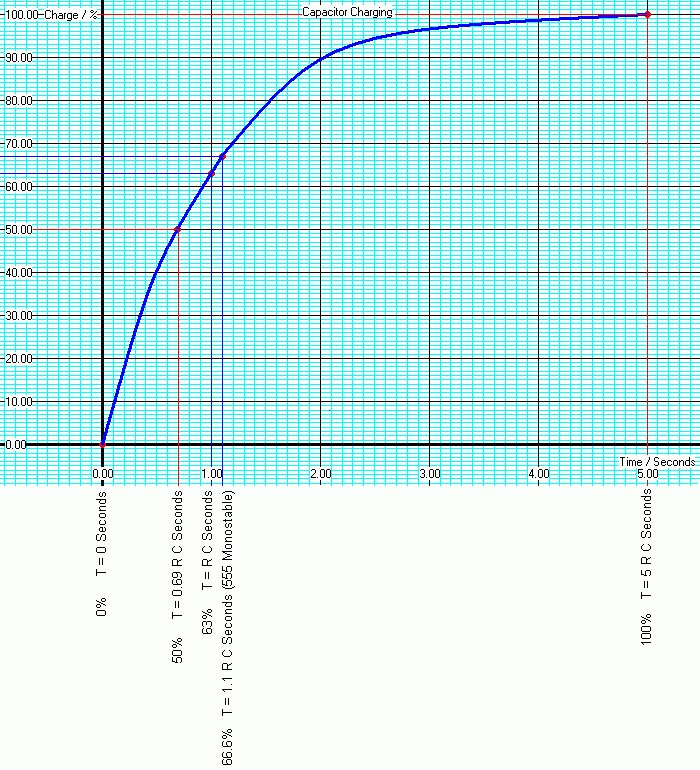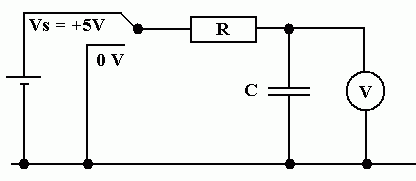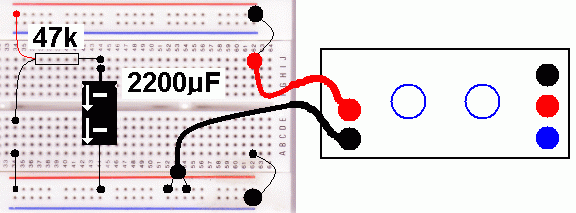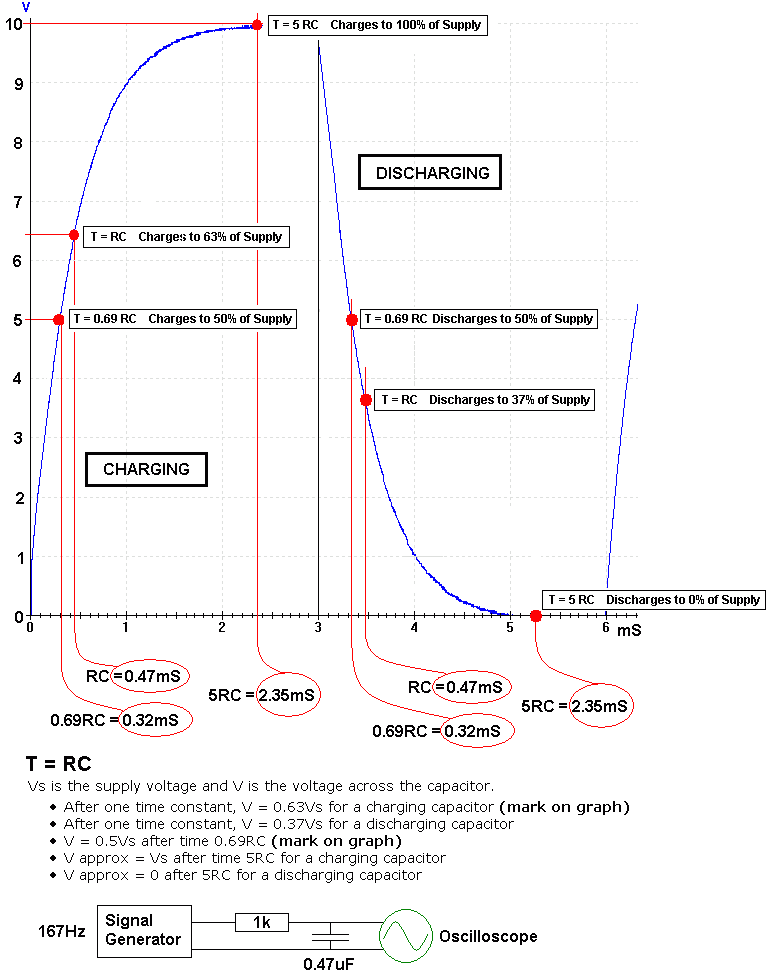

RC Timing Circuits |
|
To gain access to revision questions, please sign up and log in.
The time constant calculations below are needed for designing timing circuits.
Here is a timing circuit. Click the switch the start charging or discharging ...
Advanced Science: In this circuit, when the switch is flipped, the voltage across the capacitor changes quite fast and the current flowing is larger. As the capacitor approaches full charge (or discharge) the voltage changes more slowly and the current is smaller. The current is proportional to the rate of change of voltage. This is completely unlike resistor behaviour where the current is proportional to the voltage.

|
|
| 0% | T = 0 Seconds |
| 50% | T = 0.69 R C Seconds |
| 63% | T = R C Seconds |
| 66.6% | T = 1.1 R C Seconds (555 Monostable) |
| 100% | T = 5 R C Seconds |

|
|
| 100% | T = 0 Seconds |
| 50% | T = 0.69 R C Seconds |
| 37% | T = R C Seconds |
| 0% | T = 5 R C Seconds |
The aim is to measure the voltage across a charging capacitor at regular time intervals. Once the capacitor is fully charged, repeat the measurements while it is discharging. These results should be plotted on a graph. The graph should then be marked up with the key positions listed above.


Charging ...
Discharging

For the Falstad Circuit Simulation, CTRL+Click DC RC Timing Circuit
In options, check European Resistors and uncheck Conventional Current.
Click the switch to charge and discharge the capacitor
Alternatively view RC_Timing.txt.
Save or copy the text on the web page. Import the saved or copied text into the Falstad simulator.
Here is the new HTML5 Simulator Site.
This is the AC equivalent of resistance.
Xc = 1 / ( 2 p F C )
reviseOmatic V3 Contacts, ©, Cookies, Data Protection and Disclaimers Hosted at linode.com, London